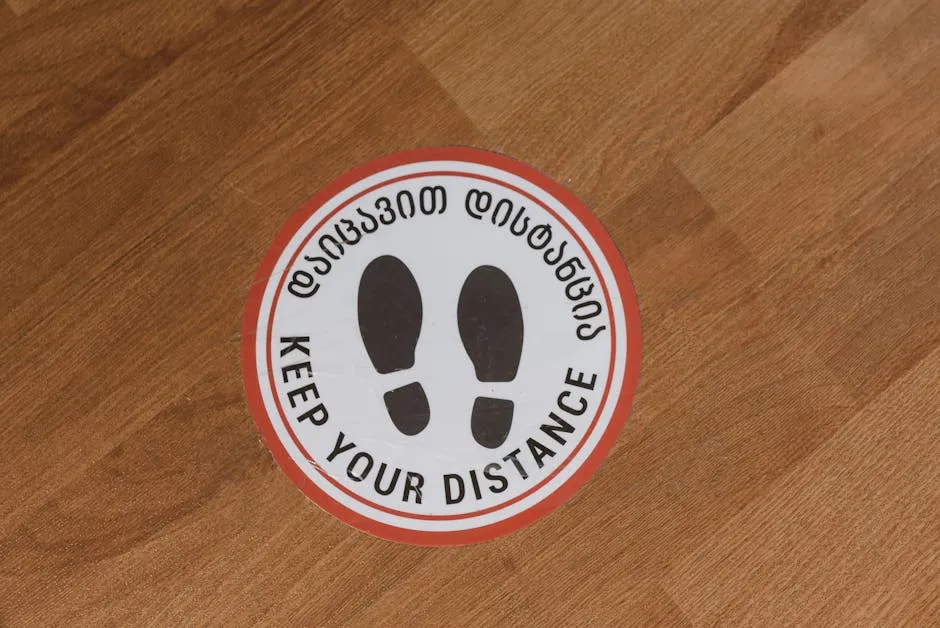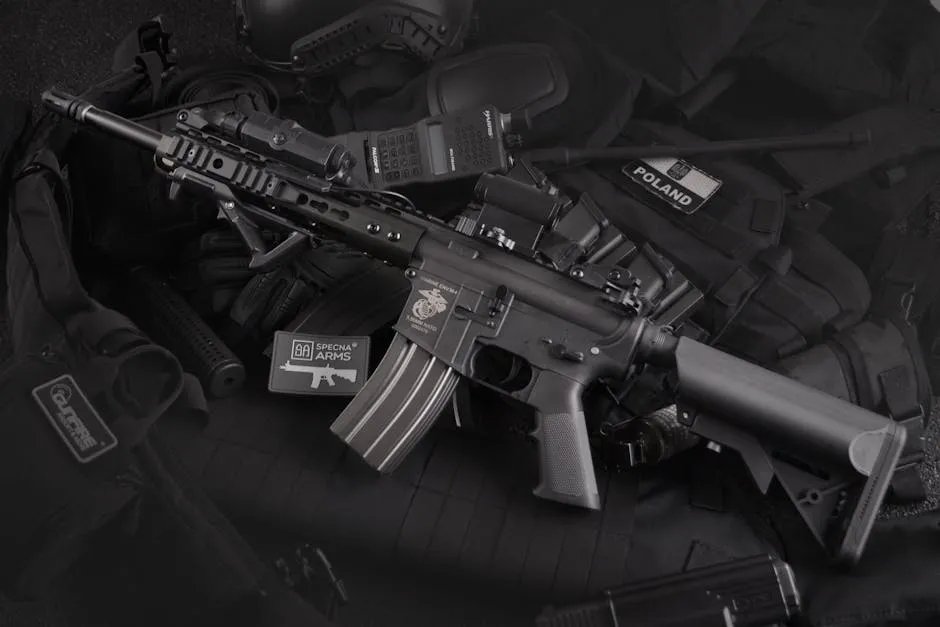Introduction
In the world of ammunition reloading, the quest for the perfect load can feel like an exhilarating treasure hunt. For enthusiasts looking to enter the unique universe of black powder substitutes, Pyrodex offers an intriguing option for .32 ACP reloading. But before you start mixing, measuring, and loading, there are essential considerations to keep in mind—like safety, accuracy, and, of course, the right data.
Pyrodex isn’t just any powder; it’s a black powder substitute that mimics the performance of traditional black powder while offering some advantages. It’s lighter, producing more energy per pound. However, it does come with its own quirks and requirements. For instance, you must always measure charges by volume, not weight, to avoid potential mishaps. Yes, Pyrodex can be a bit temperamental, but for those willing to embrace the challenge, the rewards can be gratifying. Speaking of rewards, if you’re looking for a reliable black powder substitute, check out Pyrodex P Black Powder Substitute for your reloading needs!
This guide will equip you with everything you need to know about reloading .32 ACP using Pyrodex powder. You’ll find tips, tricks, and expert insights gathered from seasoned reloaders. From understanding the intricacies of Pyrodex to safe loading practices, we’ve got you covered.
Safety is paramount, especially when dealing with any form of gunpowder, and Pyrodex is no exception. Always ensure that there’s no air space in your cartridges; a little compression is crucial. Additionally, cleanliness is key—Pyrodex leaves corrosive residues that require immediate cleaning to protect your firearm. To help with that, consider investing in a Gun Cleaning Kit to keep your firearm in top shape!
So, get ready to unleash the power of your .32 ACP with Pyrodex! Whether you’re a seasoned reloader or just starting, this guide will help steer you toward crafting reliable, enjoyable ammunition, ensuring every shot hits the mark—figuratively and literally.

Understanding Pyrodex Powder
What is Pyrodex?
Pyrodex is a popular black powder substitute. It offers a cleaner burn and less smoke than traditional black powder. This makes it an attractive option for shooters looking to minimize fouling in their firearms. Pyrodex is manufactured by Hodgdon, a recognized name in the gunpowder industry.
When comparing Pyrodex to traditional black powder, the differences become apparent. Traditional black powder consists of potassium nitrate, charcoal, and sulfur. Pyrodex, on the other hand, is a proprietary blend of chemicals. This blend provides similar performance but with enhanced convenience. Unlike black powder, Pyrodex is less hygroscopic, meaning it absorbs less moisture. This property helps maintain its performance over time. If you’re interested in trying a different black powder substitute, you might want to check out Hodgdon Pyrodex RS Black Powder Substitute, which is great for larger caliber rifles!
What about other substitutes? Compared to Triple Seven, another popular black powder substitute, Pyrodex has a different burn rate and energy output. Triple Seven is designed for higher velocities but can be more challenging to work with. For those seeking a balance between performance and ease of use, Pyrodex stands out as a reliable choice.
The benefits of using Pyrodex in reloading are numerous. First, it is more consistent than traditional black powder. This consistency can lead to better accuracy and performance. Second, it produces less smoke, allowing for clearer vision during shooting. Lastly, Pyrodex is available in several types, each catering to different applications.
Types of Pyrodex
Pyrodex comes in three main types: Pyrodex P, RS, and Select. Each type serves a specific purpose.
- Pyrodex P is the most commonly used variety. It is ideal for small caliber firearms, making it suitable for pistols like the .32 ACP.
- Pyrodex RS is a coarser grade, recommended for shotguns and larger caliber rifles. It offers a slower burn rate, making it less suitable for .32 ACP.
- Pyrodex Select is a hybrid of the two, designed for versatility. It can be used in various applications but is often favored for muzzleloaders.
For .32 ACP reloaders, Pyrodex P is generally the best choice. Its finer granulation allows for better measurement and more accurate charges. It also provides a suitable burn rate, ensuring reliable ignition and performance. If you’re looking for accurate measuring tools, consider a Lyman Electronic Scale to ensure your measurements are spot on!
Pyrodex Properties
Understanding Pyrodex properties is essential for effective reloading. The burn rate of Pyrodex is slower than that of smokeless powders but faster than traditional black powder. This characteristic affects how it performs in various firearms.
In terms of energy output, Pyrodex yields more energy per pound than traditional black powder. This means that reloaders can achieve similar velocities with less powder. However, it’s crucial to remember that Pyrodex should always be measured by volume, not weight.
Fouling characteristics also play a significant role. Pyrodex produces a corrosive residue when burned. Cleaning your firearm after using Pyrodex is critical to prevent rust and damage. Speaking of which, a Brass Cleaning Solution can help keep your spent cases looking shiny and new!
When measuring Pyrodex, using a volume-based method is vital. A volumetric measure will ensure consistent loads, preventing over- or under-charging. This approach differs from smokeless powder, where weight measurements are standard.
In summary, understanding Pyrodex and its properties can enhance your reloading experience. With the right type and knowledge, you can achieve optimal performance from your .32 ACP loads. Whether you’re a beginner or an experienced reloader, Pyrodex offers an exciting alternative to traditional powders.

Equipment Needed
Reloading .32 ACP with Pyrodex powder requires some essential tools. Here’s a handy list to get you started:
- Reloading Press: A single-stage press is ideal for beginners. It’s straightforward and won’t break the bank. The Lee Precision Single Stage Reloading Press is a great option!
- Reloading Dies: Look for a set specifically designed for .32 ACP. Lee Precision .32 ACP Reloading Dies are reliable options.
- Powder Measure: Essential for measuring Pyrodex by volume. You can find affordable options like the RCBS Powder Measure that ensure accuracy.
- Scale: While Pyrodex is typically measured by volume, a scale is useful for checking other components. A RCBS Reloading Scale can be a great addition to your setup.
- Case Tumbler: Keep your brass shiny and clean with a simple tumbler. It helps maintain your equipment. Check out the Frankford Arsenal Case Tumbler for a great cleaning solution.
- Primers and Brass: Don’t forget to stock up on small pistol primers and brass cases. You can find CCI Small Pistol Primers and Hornady Brass Cases for .32 ACP to help you get started!
For those just starting, a Lee Loader can be a great investment. It’s compact and user-friendly, making it a popular choice among newbies. The Lee Loader Kit for .32 ACP is perfect for beginners!

Safety Considerations
When it comes to handling Pyrodex, safety is non-negotiable. Here are crucial guidelines to follow:
- No Air Space: Always ensure there’s no air space in your cartridges. Loading density should be at 100% with light compression. Air space can lead to dangerous pressure spikes.
- Immediate Cleaning: Pyrodex leaves behind corrosive residues. Clean your firearm thoroughly after every use to prevent rust and damage.
- Protective Gear: Wear Safety Glasses for Reloading and gloves while reloading. It’s a small precaution that can save you from potential accidents.
- Storage: Store Pyrodex in a cool, dry place away from direct sunlight. Proper storage helps maintain its integrity.

User Experiences and Recommendations
Insights from Online Forums
Online forums are treasure troves of knowledge for reloaders. Many users share their experiences with reloading .32 ACP using Pyrodex. Here’s what they say:
- Volume Measurement is Key: A common point of discussion is the importance of measuring Pyrodex by volume, not weight. Users emphasize that this practice ensures consistent loads and avoids mishaps.
- Avoiding Air Space: Multiple forum members echo the warning against leaving air space in cartridges. “Load densely for safety,” one user advised. This caution is repeated throughout various discussions.
- Cleaning Tips: Many reloaders stress the necessity of cleaning your firearm right after shooting. “Don’t mess around,” one experienced reloader stated, “clean it immediately to avoid corrosion.”
- Equipment Recommendations: Users often share their go-to tools. A single-stage press from Lee is frequently mentioned as a good starter option. Many recommend a basic powder measure for accurate loading.
Success Stories
Real-life stories from fellow reloaders can inspire and guide you. Here are a few noteworthy anecdotes:
- The First Successful Reload: One user shared their excitement about successfully reloading their first batch of .32 ACP with Pyrodex. They started with a small load, gradually increasing it to find the sweet spot. “It felt amazing to pull the trigger and hit my target,” they said, highlighting the satisfaction of crafting one’s own ammunition.
- Lessons Learned: A seasoned reloader recounted a trial-and-error experience. Initially, they left air space in their cartridges, leading to erratic performance. After seeking advice, they learned about the importance of compression. “Now my loads are consistent, and I’ve never looked back,” they shared.
- Best Practices: An experienced user emphasized the importance of taking detailed notes during the reloading process. “Write everything down, including your measurements and results. It’ll help you refine your technique,” they suggested. This approach not only enhances accuracy but also builds confidence in your reloading skills.
These insights from the community can help you avoid pitfalls and improve your reloading process. Remember, every reloader starts somewhere, and learning from others is a vital part of the journey.

Cautions and Warnings
Reloading with Pyrodex powder may seem like a fun adventure, but it comes with notable dangers. Many users have reported issues related to its corrosive nature. Pyrodex leaves behind nasty residues that can wreak havoc on your beloved firearm. Neglecting to clean your weapon promptly can lead to rust, pitting, and overall damage. As one user aptly put it, “Pyrodex is a rusting agent that just happens to burn.”
Another caution revolves around measuring the powder. Always ensure you’re measuring by volume, not weight. Failure to do so can result in incorrect charges, causing dangerous overpressure situations. Remember, no air space should exist in your cartridges; loading density must be 100%. Light compression is key here, so don’t be shy about packing that powder!
When it comes to cleaning, a thorough post-shoot routine is critical. After using Pyrodex, clean your firearm immediately—don’t wait until the next day. Users suggest immersing fired cases in a 50/50 mix of water and white vinegar to neutralize residues. This simple step can prolong your firearm’s life and ensure it remains in tip-top shape. For this, you might want to grab some Birchwood Casey Gun Cleaning Supplies to keep everything neat and tidy!

Conclusion
Reloading .32 ACP ammunition with Pyrodex powder presents an exciting opportunity for enthusiasts looking to explore black powder substitutes. With the right data and safety practices, you can create a reliable and enjoyable shooting experience.
First and foremost, understand that safety is paramount. Pyrodex may be a fun alternative, but it has its quirks. Always measure charges by volume and ensure no air space in your cartridges. Light compression is your friend! The thrill of reloading comes with responsibility, and adhering to these guidelines will keep your sessions safe and enjoyable.
Next, let’s talk about cleaning. The corrosive nature of Pyrodex means your firearm will need some TLC after each use. Immediate cleaning is essential to prevent rust and damage. Remember, a clean gun is a happy gun!
When you gather your materials, remember to consult multiple resources for reloading data. The community is full of experienced reloaders eager to share their insights. Your success is often built on the wisdom of others, so don’t hesitate to tap into that knowledge. If you’re looking for a solid reloading manual, consider the Lyman 50th Edition Reloading Manual for comprehensive data!
Lastly, embrace the learning curve. Reloading is as much about the process as it is about the product. With every cartridge you craft, you’ll gain confidence and skill. Share your experiences, ask questions, and learn from each batch you load.

So gather your materials, follow the guidelines outlined in this article, and embark on your reloading journey with confidence! Whether you’re shooting for sport or just for fun, reloading with Pyrodex can add a unique twist to your shooting experience. Happy reloading!
FAQs
Can I use Pyrodex in any .32 ACP firearm?
Using Pyrodex in a .32 ACP firearm is not as straightforward as it might seem. While many modern firearms are robust enough to handle black powder substitutes, compatibility can vary. Always consult your firearm’s manual for specific recommendations. Some older models may not be designed for Pyrodex, and using it could lead to issues. When in doubt, reach out to the manufacturer or a knowledgeable gunsmith. They can provide valuable insights on whether your particular firearm can handle Pyrodex safely. Remember, it’s better to be safe than sorry—your firearm’s integrity is paramount!
What is the difference between using Pyrodex and smokeless powder?
Great question! Pyrodex and smokeless powder have distinct differences that impact performance and safety. Pyrodex is a black powder substitute, so it behaves differently in terms of energy output and burn rate. It produces a faster burn compared to traditional black powder but is slower than smokeless powder. Smokeless powder generates higher pressures and is generally cleaner with less fouling. Pyrodex, however, leaves behind corrosive residues that can harm your firearm if not cleaned promptly. This means you’ll need to clean your firearm thoroughly after using Pyrodex, ideally immediately afterward. In short, choose Pyrodex for that classic shooting experience, but be prepared for extra cleaning!
How should I clean my firearm after using Pyrodex?
Cleaning your firearm after using Pyrodex isn’t just a good idea—it’s essential. Here’s a step-by-step guide to keep your firearm in tip-top shape: 1. Immediate Action: Clean your firearm as soon as you finish shooting. Delaying can lead to corrosion. 2. Disassemble: Safely disassemble your firearm according to the manufacturer’s instructions. 3. Soak Parts: Prepare a 50/50 mix of water and white vinegar. Soak the fired cases and parts in this solution to neutralize the corrosive residues. 4. Scrub: Use a soft brush to scrub the barrel and other components. Pay special attention to any fouling buildup. 5. Rinse and Dry: Rinse all parts with clean water, then dry thoroughly to prevent moisture from causing rust. 6. Lubricate: Apply a light coat of gun oil to protect the metal surfaces from moisture. Following these steps will help extend the life of your firearm and keep it shooting smoothly!
Is it safe to mix Pyrodex with other powders?
Mixing Pyrodex with other powders is generally a big no-no. Each powder has its own unique properties and burn rates, which can lead to unpredictable and potentially dangerous results. Safety should always come first in reloading practices. If you’re looking to experiment with different powders, do so one at a time. Stick to one type per loading session to maintain consistency and safety in your ammunition. It’s also wise to consult reloading manuals or trusted sources for guidance on the compatibility of different powders.
Where can I find additional reloading data for .32 ACP?
Finding reliable reloading data for .32 ACP can feel like searching for a needle in a haystack. Luckily, several trustworthy resources are available. Start with the following: 1. Hodgdon’s Website: They provide extensive reloading data for various powders, including Pyrodex. 2. Reloading Manuals: Investing in a quality reloading manual, like the Lyman Reloading Handbook, will provide you with a wealth of information. 3. Online Forums: Communities like Cast Boolits and The Firing Line have experienced reloaders who share their insights and data. 4. Local Gun Shops: Don’t underestimate the knowledge of your local gun shop staff. They may have valuable reloading data or be able to point you in the right direction. With these resources, you’ll be well-equipped to find the data you need for safe and effective reloading!
Please let us know what you think about our content by leaving a comment down below!
Thank you for reading till here 🙂
For a deeper understanding of reloading practices, check out these best practices for using Israel Central Bureau of Statistics data visualization.
All images from Pexels




